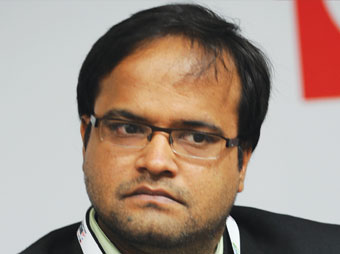
www.cisco.com/web/IN/index.html
The rapidly changing urban security scenario demands a sophisticated, open and integrated safety system that works with minimal human intervention

Lokesh Lohia, Manager, Sales, Cisco

 Securing a city is becoming an increasingly complicated business in the present day and age. Just a few years back, urban security was concerned only with deploying more cameras, more x-ray machines, more security guards etc. The situation today is very different, and technology is playing a much bigger role in ensuring safety of a city. At Cisco, we and our partners are trying to develop an end-to-end architecture that covers each and every aspect of a security system so that all components from the most basic to the most complex are provided as part of a turn-key solution comprising of both products and services.
Securing a city is becoming an increasingly complicated business in the present day and age. Just a few years back, urban security was concerned only with deploying more cameras, more x-ray machines, more security guards etc. The situation today is very different, and technology is playing a much bigger role in ensuring safety of a city. At Cisco, we and our partners are trying to develop an end-to-end architecture that covers each and every aspect of a security system so that all components from the most basic to the most complex are provided as part of a turn-key solution comprising of both products and services.

Not long back, we had a plethora of gadgets, each with its own different system and each with its own set of limitations. All that is now being replaced by sophisticated systems with integrated modules all working as one. Tools such as video analytics and incident response solutions are acquiring increasing importance in the current scenario and that is where the market is moving.

Ensuring safety and security in an urban environment requires us to address five key concerns – those related to protection, prevention, detection, assessment and response
Key Concerns
In the 21st century, ensuring safety and security in an urban environment requires us to address five key concerns – those related to protection, prevention, detection, assessment and response. Every single component of the system is critical when it comes to securing a city.
In order to improve system reliability, it is essential to minimise human intervention and manual processes. An analysis of recent security incidents shows that human intervention errors comprise the highest proportion of mistakes in responses. It is important to design systems with automated processes so that a security incident is automatically detected as soon as it occurs, and based on the policies that have been defined in the command and control centre, a response mechanism automatically kicks in. This is something very important.
Another important concern is that physical security solutions tend to be more product based. We have to move from such a scenario and adopt more architecture-led solutions that understand the entire gamut of security issues. We then need to have policies for response mechanism and create an architecture that can deliver solutions. The next important aspect for a reliable security system is ensuring proper domain knowledge in the system. Physical security in an urban setting is a complex task. At Cisco, we have created different domains: crisis management, urban security, border control, mass venues, public transport and prison approbation. We have developed domain-specific architectures, solutions and products, which then have to be all knitted into one single story.
Our analysis of security incidents shows that the initial response in the most vital early moments is often found wanting. These moments are very important for assessing the situation and devising an appropriate response strategy. The second most important part is the interoperability of systems and how communication happens between the stakeholders.
Third, we need to ensure that the end product is easy to use, as the guy handling it would not be a technical expert. He should be able to understand the solutions completely . From a scenario of multiple screen-filled control rooms, we have reached an era of dashboard style single control rooms. At the end of it all, the final goal remains to ensure security of the city.
Be a part of Elets Collaborative Initiatives. Join Us for Upcoming Events and explore business opportunities. Like us on Facebook , connect with us on LinkedIn and follow us on Twitter, Instagram.
"Exciting news! Elets technomedia is now on WhatsApp Channels Subscribe today by clicking the link and stay updated with the latest insights!" Click here!













